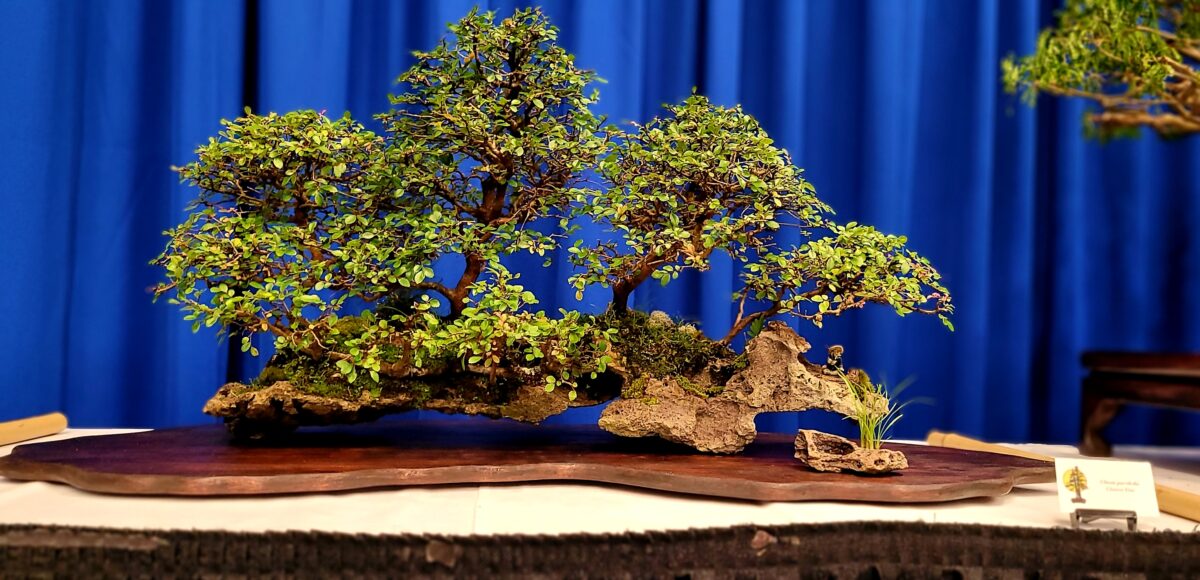
Various species of the Elm family are found growing around the world. There are a number of Elms native to the Southern United States that do well as bonsai. The most common Elm used in bonsai is the Chinese Elm, native to China, Korea and japan. A tree of a different genus but of the Elm family is the Zelkova species.
Most common species used for bonsai:
Ulmus parvifolia Chinese Elm
There are many varieties of Chinese Elm:
Ulmus parvifolia ‘Catlin’ A sport with very small leaves.
Ulmus parvifolia ‘Corticosa’ Forms corky growths on the trunk.
Ulmus parvifolia ‘Hokkaido’ Very tiny leaves, smallest of all Elms. Needs a cooler climate.
Ulmus parvifolia ‘Drake’ Larger leaves with an interesting bark pattern as it ages.
Ulmus parvifolia ‘Sempervirens’ Needs a warm climate.
Other species of Elm:
Ulmus crassifolia Cedar Elm. Native to Texas and Northeast Mexico. Leaves are more serrated and have corky branches.
Ulmus americana floridana Florida Elm. Very large leaves, best suited for large bonsai. This is the American species most affected by Dutch Elm disease, it is slowly dying out of existence.
Ulmus alata Winged Elm. Florida native. This Elm is noted for its interesting gnarled bark and the way the branches form flattened “wings” as it ages.
Zelkova serrata Japanese Zelkova Zelkova belongs to the same family as the Ulmus but a separate genus because of the leaf formation and the fruit. The leaves of the Ulmus are double toothed while the Zelkova has single toothed leaves.
Celtis occidentallis Common Hackberry. This tree is found throughout North America. The leaves differentiate it from other members of the Elm family. The leaves are serrated with a sharp apex but are lop-sided in shape. Bark is light gray and almost warty in appearance. Its branching grows horizontal and in a zig-zag pattern.
PRUNING... Elms can be heavily pruned in winter. Root pruning should be moderate. Prune when leaves are 4-6 in number back to two or one node before branch elongation begins. On the smaller leaf varieties allow to grow to 10-20 leaves and then prune back to 5-10. For good ramification it requires pruning often. A fast grower from first bud in spring to onset of cold weather.
TRAINING... Wire can be used, young branches bend rather easily, older branches can be bent with care. A fast grower so watch for wire scarring. It is best to use clip and grow on Winged Elms, as not to damage the wings.
WATERING... Elms like a lot of water through the growing season, but don’t like wet feet. Use a well draining soil. Most Elms don’t lose all of their leaves in the winter, although they are dormant, be careful not to over water while dormant.
LIGHT... Best in full sun. Chinese Elms can be grown in less light.
INSECT/DISEASE... Resistant to most insects and disease. It can get red spider mites, bark beetles, web worms, aphids and caterpillars. With our summer rains watch for fungus, generally showing as leaf spots, treat with a systemic fungicide.
REPOT... Best just as news buds are appearing in spring. I have repotted in winter and even into late spring after leafs merge.
FERTILIZE... Any well balanced fertilizer through the growing season, but not heavily. Trace of Ironite monthly through the summer.
SEASONAL... Cold hardy.


